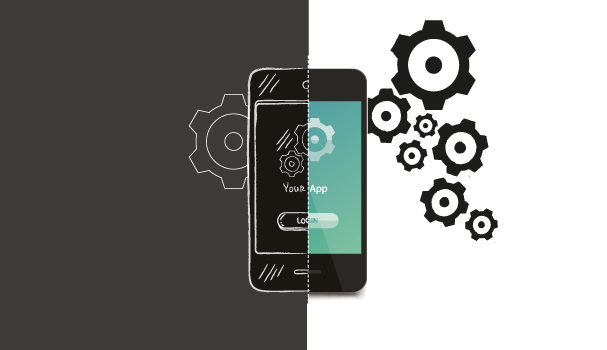One of the beautiful things about many apps these days is how simple they are to use but this belies the huge amount of work that goes into creating them. For start-ups looking to build their own apps, careful planning is vital if they are to create something that earns pride of place on users’ mobiles.
Inevitably, the process of creating an app starts long before a team starts getting its hands dirty with wireframes and code. “The first thing you need to do is outline a definition of the issue or the problem you’re trying to solve,” says Aish Campbell, associate user-experience (UX) director at Albion, the integrated agency. Identifying the pain points of potential users is fundamental and will shape everything that comes after. This then allows a developer to identify and harness all of the assets at its disposal. “Usually we will try and find out if there’s any existing insights we could leverage to help develop that proposition, be that user insight or stakeholder interviews,” she continues.
Once a start-up has a loose idea of the problem it intends to solve, it can be tempting for teams to race ahead and start tackling their respective responsibilities. But developing a snazzy interface without thinking about the back-end or working on data feeds without knowing exactly what the app requires is a recipe for disaster. Alistair Crane, founder of Monitise Create, the mobile innovation and design studio, recalls an analogy a developer once told him, comparing the process to digging the Channel Tunnel. “We didn’t start in England and just dig all the way to France or vice versa; we started at both ends and shook hands in the middle,” he says. “It absolutely has to be something done in tandem.”
Ross Mason, founder & VP product strategy of MuleSoft, the integration platform for applications and data sources, agrees that it’s vital to ensure there is a unified approach between front-end and back-end development. “Get those two teams to collaborate very early without writing any code because code is expensive,” he says. If teams are brought together at an early stage and use tools to model how the front and back-ends will plug into each other, this allows them to create a clear spec that both can work toward. “That removes a lot of the friction around miss-specifying things or things changing,” he says. “It means that when they come together it doesn’t take another two months to figure out how to really glue the two worlds together.”
These initial conversations then give those working on the back-end a much clearer map of the features that are required. “Those features are normally storyboarded and then give you the idea of what you’re going to need on the back end,” says David Elstob, associate technical director of Albion London. Creating the architecture required to support these features will then become much easier; knowing that an app is likely to have peaks in traffic may mean having multiple servers, whilst knowing you need push notifications means you’ll need specific architecture to deal with them. “Each of those individual things will tick certain boxes as to the back-end functionality that’s required,” Elstob says.
It’s worth bearing in mind, however, that you don’t totally need to reinvent the wheel. Using application programming interfaces (APIs), developers can use assets created by other enterprises as building blocks to plug data and functionality into their apps. “Over 13,000 APIs are available for people to use; that’s everything from recommendation engines to facial recognition to telephony,” says Mason. “There’s a very broad scope of things that you can reuse from other vendors.”
When looking at front-end app development, one of the key elements of creating an app is designing a user interface (UI) that really serves the needs of customers. “Ignoring all of the extra detail, you start off with the ideal journey and you basically map out with lines and boxes what path you want the consumer to take,” Crane says. To do this, typically UX developers will begin with paper sketches of the different screens of an app, then map how they fit together with wireframe diagrams, before creating fully fleshed out designs and prototypes.
But to understand the efficacy of this design, it is vital that you test this at every stage and make sure that users find it fluid and natural. “We always recommend you involve users throughout the entire process,” Campbell says. “It’s important that you understand and test all the different touch points; what key journeys the users are going to be undertaking,” she says.
It’s fair to say that this kind of intuitive UX has gained real currency in recent years. Creating an app that works with users’ natural expectations is a real art and spells the difference between an app that gets used regularly and one that’s deleted within a few days. “It is a bit of an art because you have to have guys that innately have design in their blood,” Mason says. “Good designers tend to favour simplicity and really try to get to the head of what consumers are going to want to do.”
When it comes to releasing an app, rather than trying to cram in every imaginable feature from the get-go, it’s important to get out a minimum viable product (MVP) that will begin to build a user base. “As long as you have one element in there that is genuinely going to improve their lives or their shopping habits or their behaviour, then you launch around that one feature or function,” says Crane. “And then you build from there.”
Effectively an app developer’s work is never done; from this point, a start-up will begin to create new iterations based on user feedback and grow the app’s feature set. But with careful planning it can get an MVP out of the door that will give it a point to grow from. ![]()
Share via:








































